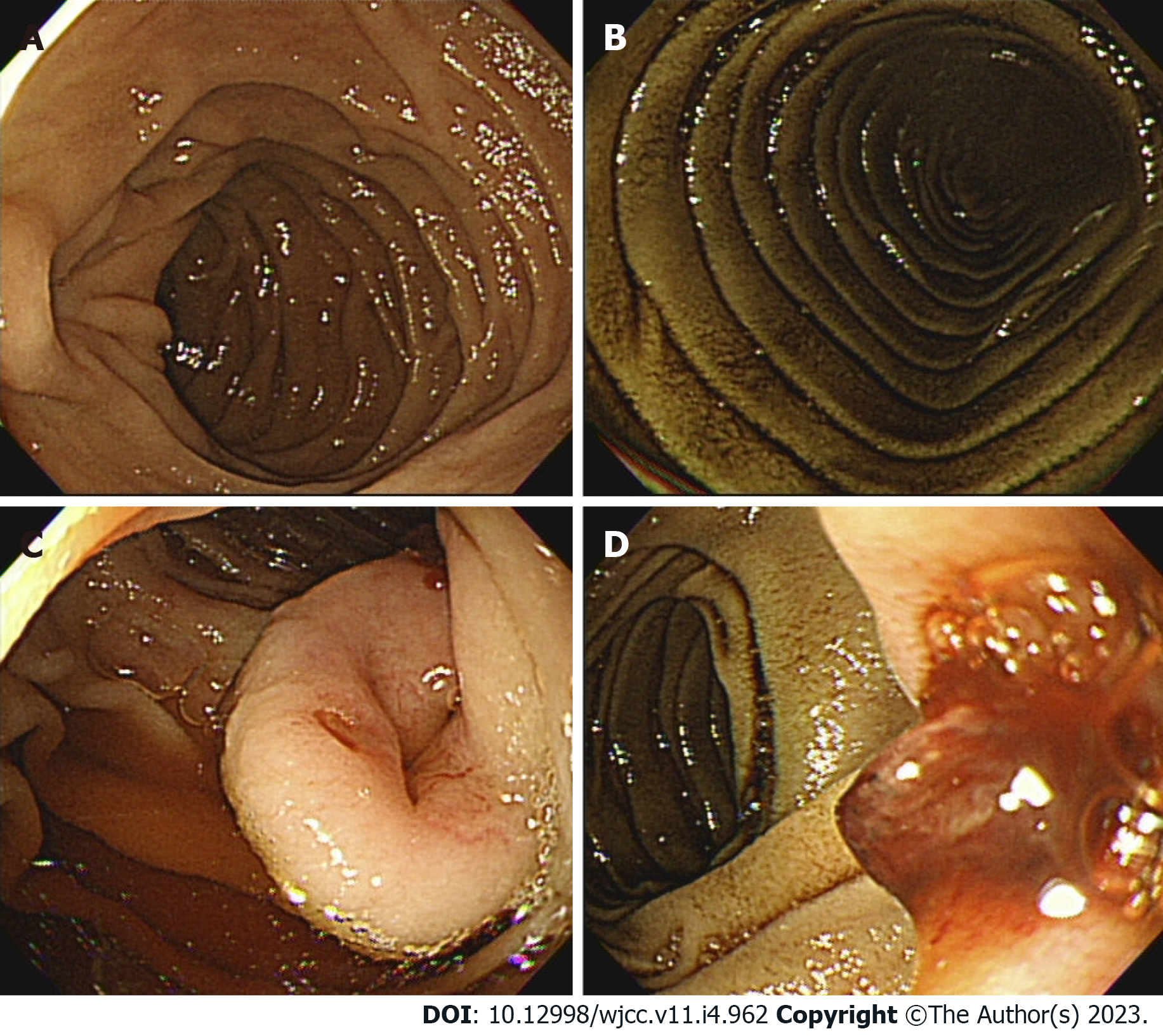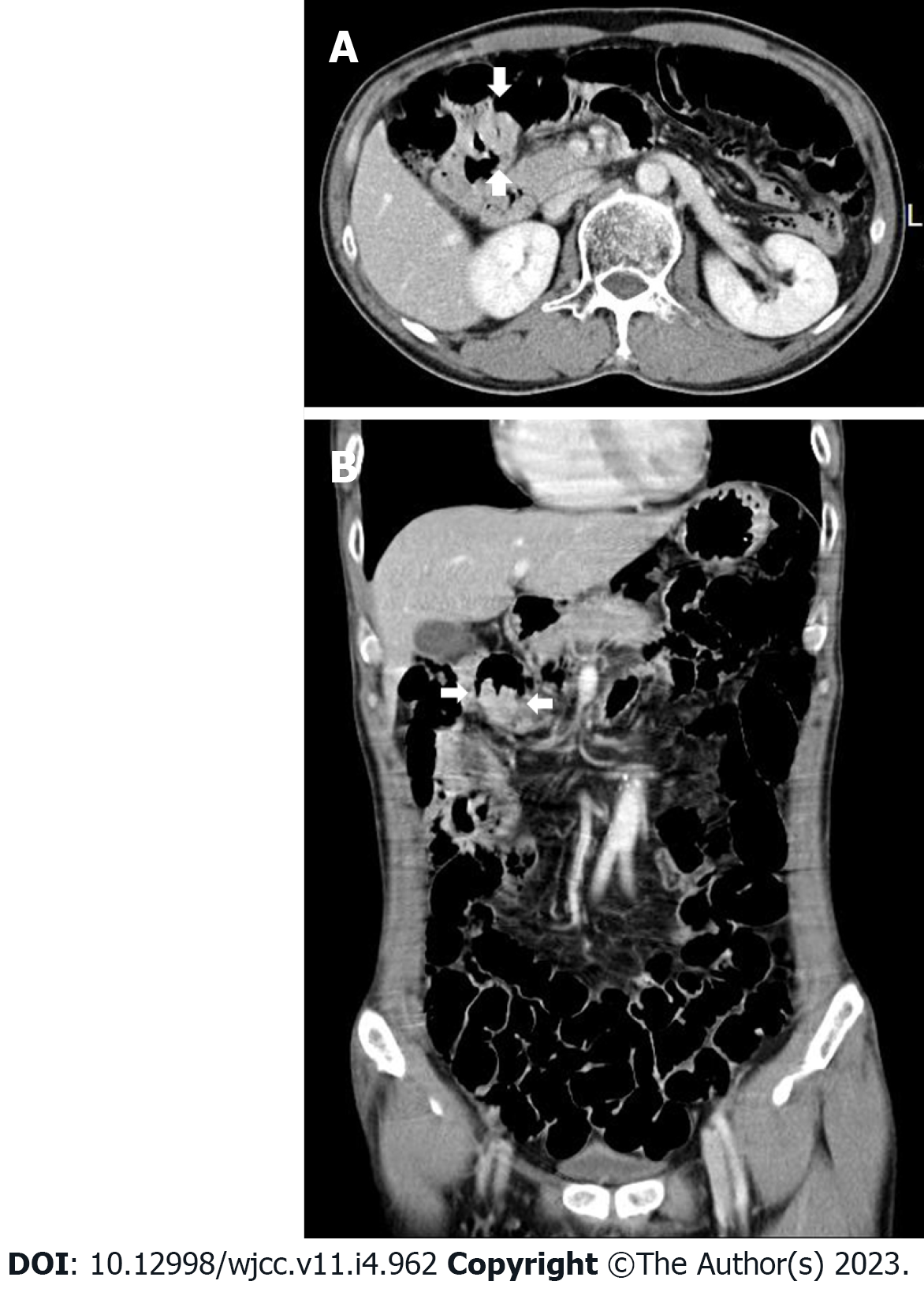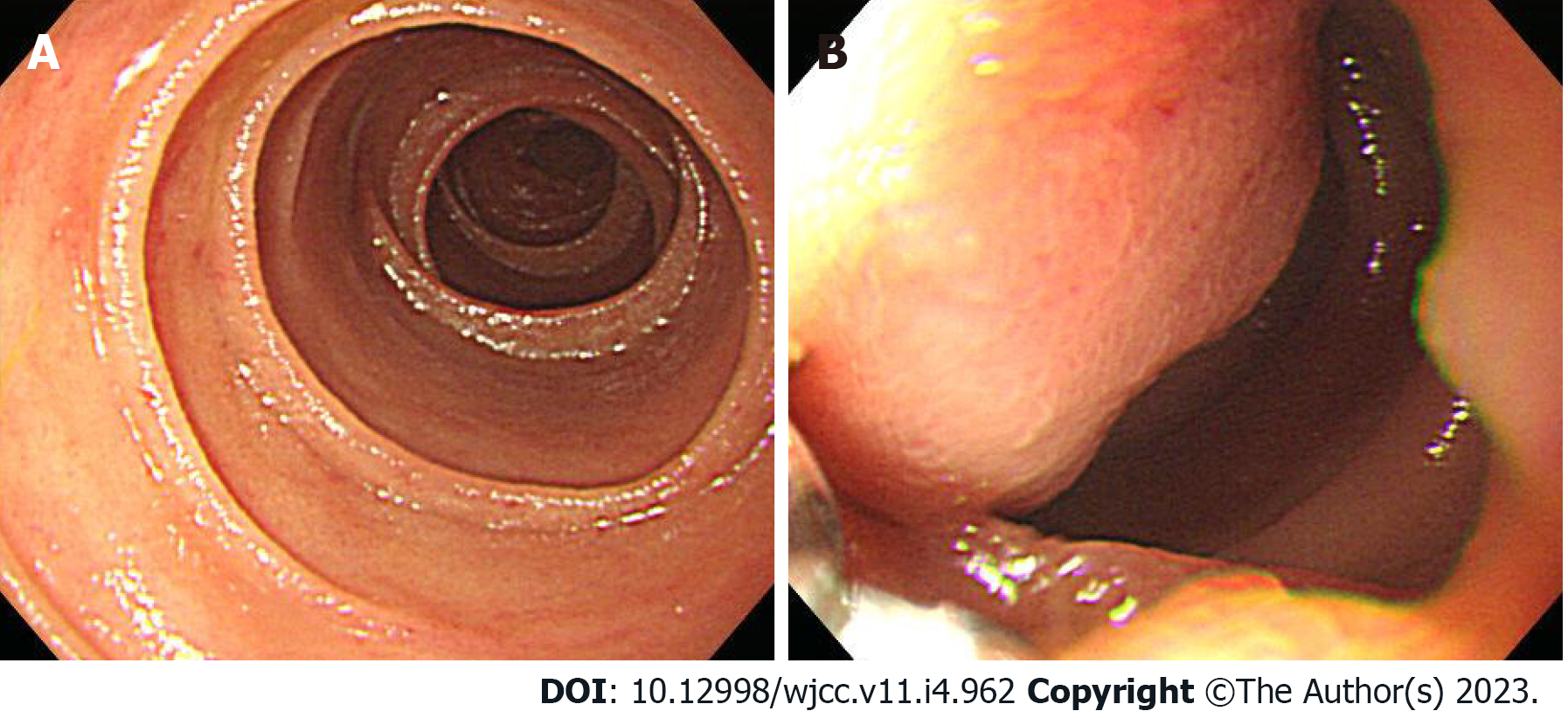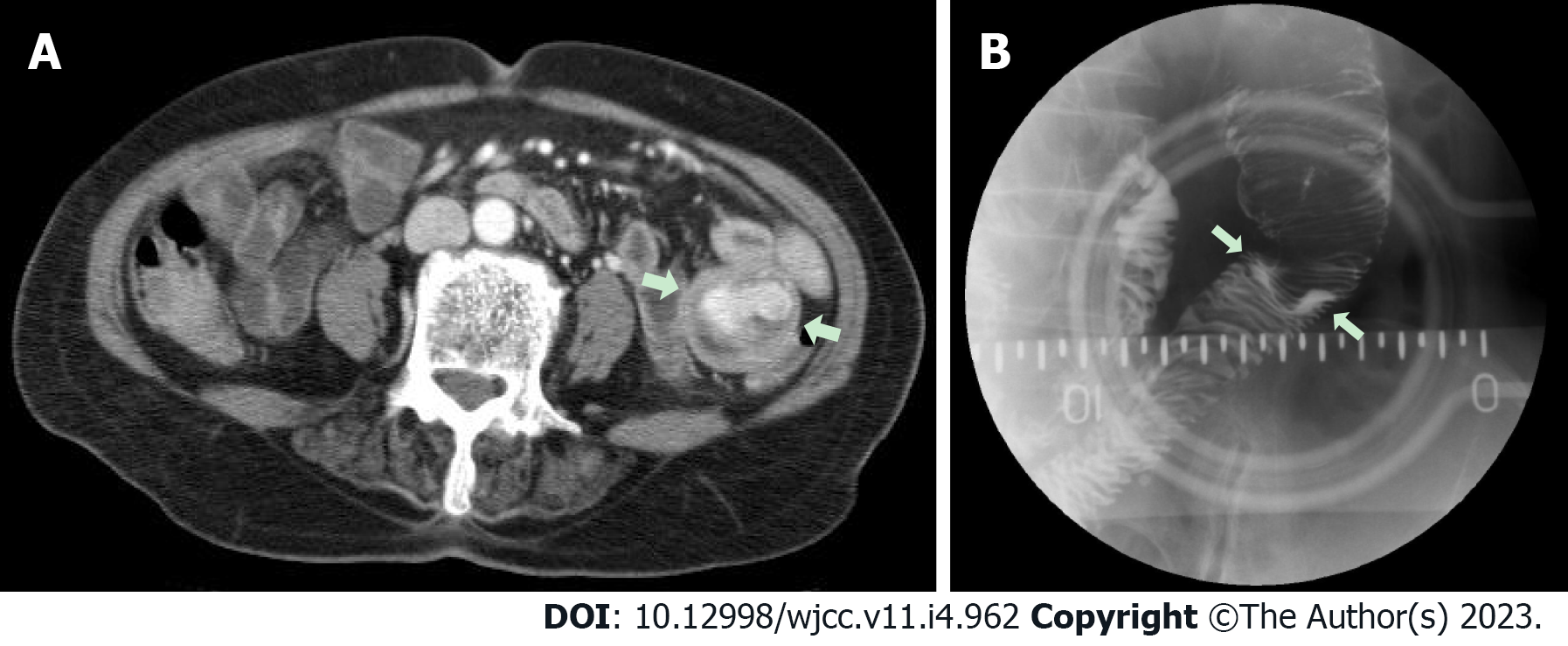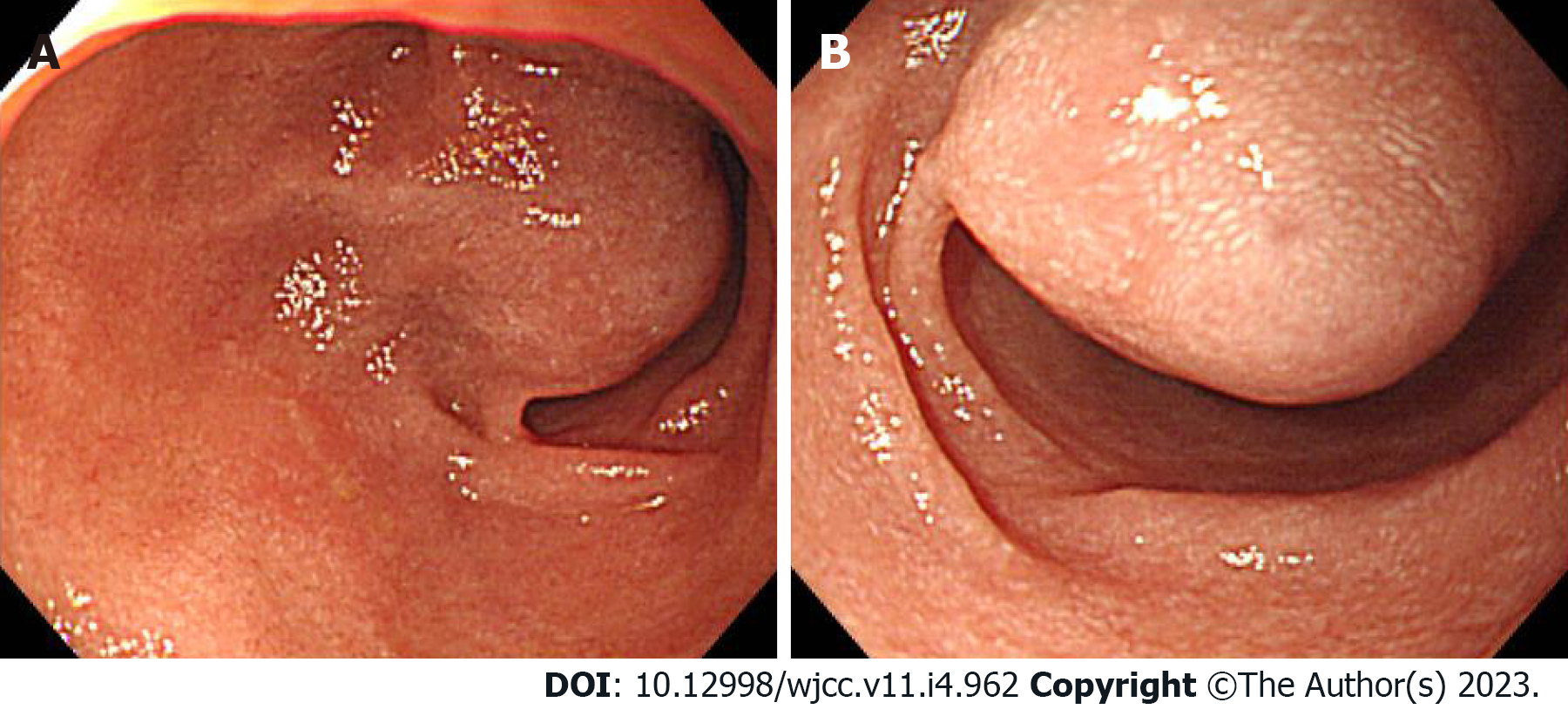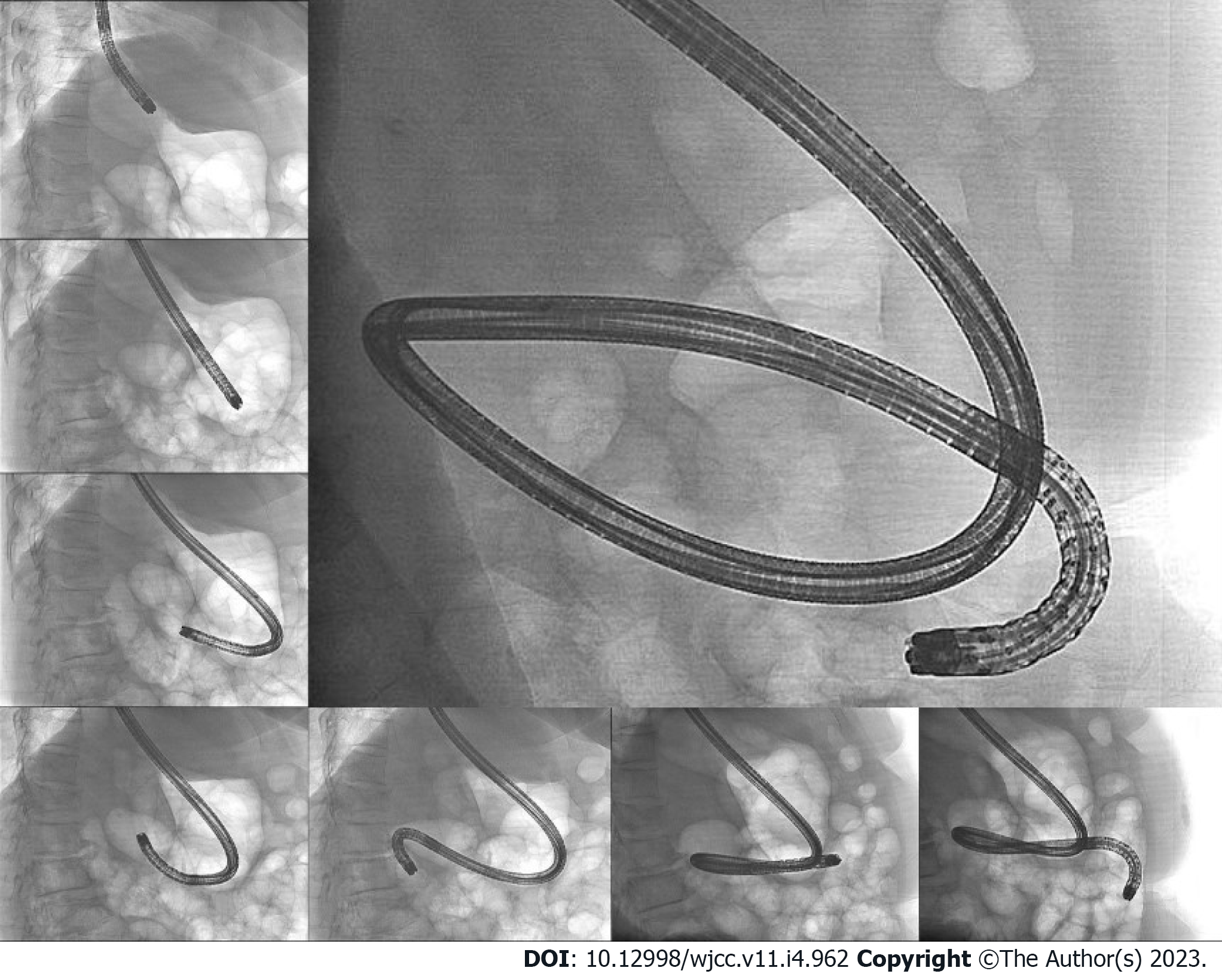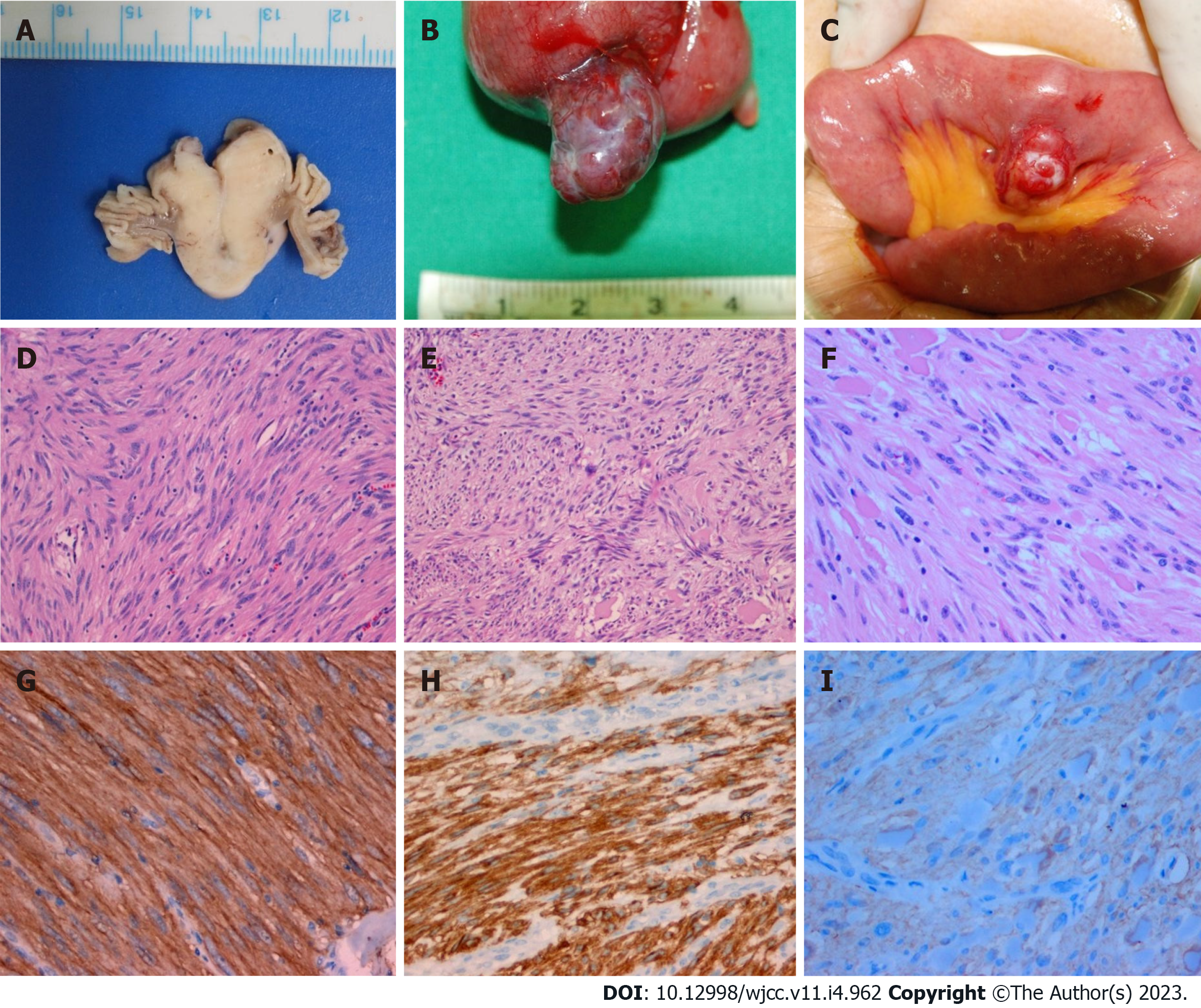Copyright
©The Author(s) 2023.
World J Clin Cases. Feb 6, 2023; 11(4): 962-971
Published online Feb 6, 2023. doi: 10.12998/wjcc.v11.i4.962
Published online Feb 6, 2023. doi: 10.12998/wjcc.v11.i4.962
Figure 1 Conventional upper gastrointestinal endoscopy findings.
A and B: A dark discoloration is seen in the area which suspected to the third part of the duodenum; C: There is an approximately 2.5 cm central depressed mass in the transitional zone with mucosal color; D: The mass shows a smooth surface and focal bleeding with exposed vessels.
Figure 2 Abdominal computed tomography with contrast enhancement.
It shows an enhancing mass (arrow) with central depression and luminal narrowing at proximal jejunum. A: Axial view; B: Coronal view.
Figure 3 Conventional upper gastrointestinal endoscopy findings.
A: The tip of an endoscope is inserted into the area suspected to the fourth part of the duodenum; B: A 1.5 cm sized irregular-shaped protruding mass is seen in the area suspected to the fourth part of the duodenum.
Figure 4 Abdominal computed tomography and small bowel series with barium findings.
A: Abdominal computed tomography with contrast enhancement. It shows an enhanced mass(arrow) with luminal narrowing at the proximal jejunum; B: An intraluminal protruding mass is seen in the small bowel series with barium.
Figure 5 Abdominal computed tomography and small bowel series with barium findings.
A and B: Abdominal computed tomography with contrast enhancement. They show a 3.8 cm sized dumbbell-shaped enhanced mass in the proximal jejunum (arrow). A: Coronal view; B: Axial view; C: A 2.0 cm sized filling defect lesion is seen in the small bowel series with barium.
Figure 6 Conventional upper gastrointestinal endoscopy findings.
A and B: A 3 cm sized mass covered with normal mucosa was nearly filling the lumen at proximal jejunum.
Figure 7 Fluoroscopy findings.
The largest image shows that the tip of the endoscope is located at proximal jejunum (beyond the Treitz ligament). Counterclockwise from the top left image: The tip of the endoscope is located at the cardia, angle, proximal antrum, distal antrum, bulb, ampulla of Vater, and distal duodenum.
Figure 8 Macroscopic and microscopic examination.
A: Macroscopic cross section shows a gray-white solid tumor; B: Macroscopic examination shows a 2 cm (longest diameter) encapsulated lobulating mass; C: Macroscopic examination shows a 2.5 cm sized encapsulated round mass; D-F: Microscopic examinations show that the tumors are composed of spindle cells having high cellularity (hematoxylin-eosin staining, × 100); G-I: Immunohistochemically, these tumors are positive for CD117 (c-kit stain, × 200). (A, D, and G: Patient 1; B, E, and H: Patient 2; C, F, and I: Patient 3).
- Citation: Lee J, Kim S, Kim D, Lee S, Ryu K. Three cases of jejunal tumors detected by standard upper gastrointestinal endoscopy: A case series. World J Clin Cases 2023; 11(4): 962-971
- URL: https://www.wjgnet.com/2307-8960/full/v11/i4/962.htm
- DOI: https://dx.doi.org/10.12998/wjcc.v11.i4.962













